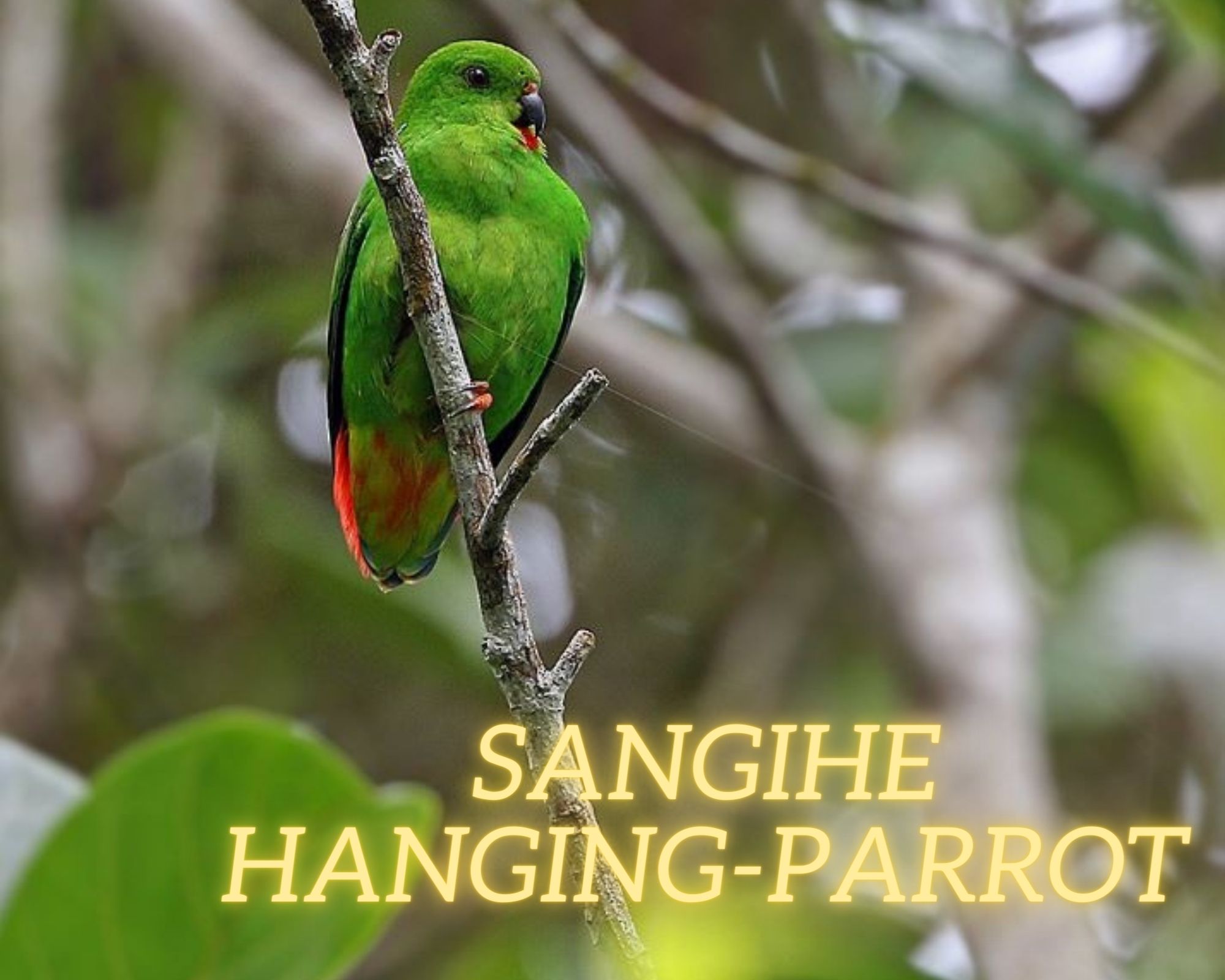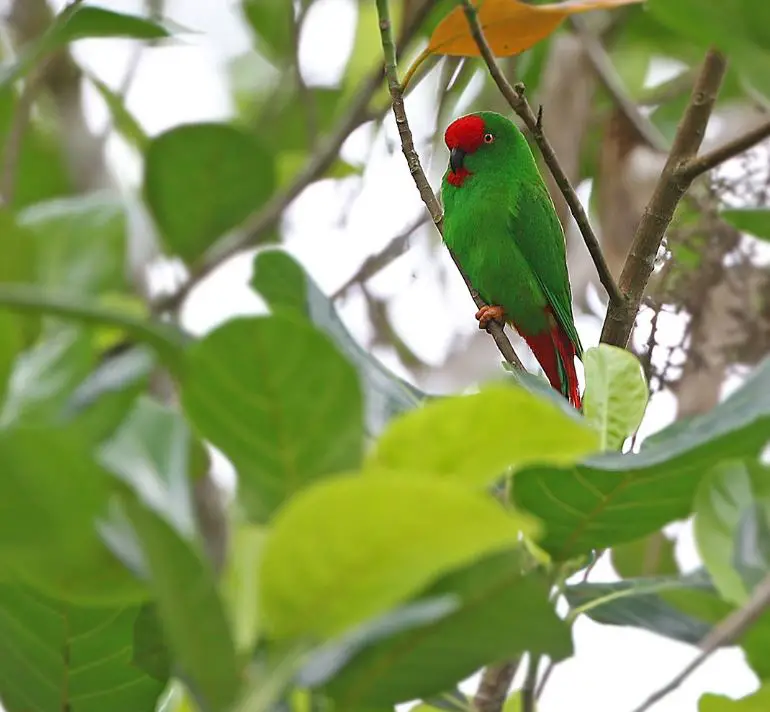
Sangihe Hanging-Parrot 12 cm. Similar to L. amabilis but the edge of the forewing is yellowish-green. The Male has a red forecrown, throat, rump, vent, and tail tips, as well as pale iris, whereas the female has a green forecrown, less red on the vent, and dark iris.
Systematics History
Member of the L. stigmatus group (see above). Sometimes treated as conspecific with L. sclateri and L. amabilis. Monotypic.
Subspecies
Monotypic.
Distribution
Sangihe I, NE of Sulawesi.
Habitat
Primary and secondary forest, mixed orchards, coconut groves, in lowlands and hills, from sea level up to 900 m.
Movement
No information.
Diet and Foraging
Little known. Coconut (Cocos nucifera) nectar appears to be an important food source, but the nectar of Lansium domesticum and Ficus fruits are also consumed. May also take invertebrates.
Sounds and Vocal Behavior
Not well documented. Sangihe Hanging-Parrot Calls include short high-pitched notes, given singly or in phrases of 3–4 notes, e.g. “tsee-see-see-seet”.
Breeding
Poorly known. A female collected in May possessed a large brood patch. The only nest found was located in a 6–7 m high dead tree-fern trunk at the edge of the primary forest; evidently contained two eggs.
Juveniles have been collected in Jan, Feb, and July, and a pair were seen feeding a juvenile in Feb.
Conservation Status
Not globally threatened. Currently considered Near Threatened. Restricted-range species: present in Sangihe and Talaud EBA. CITES II.
Total range c. 560 km². This bird has suffered from the extensive clearance of original vegetation on its single small island, but fears of its extinction in the 1980s have happily been allayed by fieldwork in 1995 and 1996 which has found it common in some previously undocumented forested areas.

Also tolerates degraded and cultivated habitats. Previously considered Endangered, a survey in 1998–1999 calculated a population of 10,700–46,200 birds, which is roughly equivalent to 6,700–31,000 mature individuals.
Since 1995, fieldwork and conservation-awareness programs have been conducted, and ideas developed for future land use, through agreements between interested parties.
Proposals made to reclassify the 4km² of “protection forest” on Mt Sahengbalira as a wildlife reserve, and some forest in Kentuhang valley is protected as a watershed for a hydro-electric scheme.
Other proposals include the establishment of a permanent presence of forestry staff on Sangihe I. Both Mt Sahendaruman and Mt Sahengbalira should be effectively protected.




















